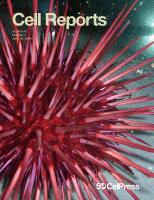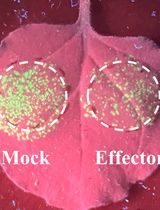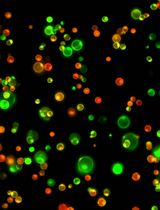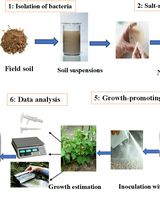- EN - English
- CN - 中文
Evaluating Mechanisms of Soil Microbiome Suppression of Striga Infection in Sorghum
评估土壤微生物组抑制高粱独脚金感染的机制
发布: 2024年09月05日第14卷第17期 DOI: 10.21769/BioProtoc.5058 浏览次数: 2225
评审: Xiaofei LiangSteven RunoKerui Huang
Abstract
The root parasitic weed Striga hermonthica has a devastating effect on sorghum and other cereal crops in Sub-Saharan Africa. Available Striga management strategies are rarely sufficient or not widely accessible or affordable. Identification of soil- or plant-associated microorganisms that interfere in the Striga infection cycle holds potential for development of complementary biological control measures. Such inoculants should be preferably based on microbes native to the regions of their application. We developed a method to assess microbiome-based soil suppressiveness to Striga with a minimal amount of field-collected soil. We previously used this method to identify the mechanisms of microbe-mediated suppression of Striga infection and to test individual microbial strains. Here, we present protocols to assess the functional potential of the soil microbiome and individual bacterial taxa that adversely affect Striga parasitism in sorghum via three major known suppression mechanisms. These methods can be further extended to other Striga hosts and other root parasitic weeds.
Key features
• This protocol provides a detailed description of the methods used in Kawa et al. [1].
• This protocol is optimized to assess soil suppressiveness to Striga infection by using natural field-collected soil and the same soil sterilized by gamma-radiation.
• This protocol is optimized to test bacterial (and not fungal) isolates.
• This protocol can be easily extended to other host–parasite–microbiome systems.
Keywords: Striga hermonthica (独脚金)Background
Sorghum (Sorghum bicolor) is among the five most important crops in the world and a staple food and forage cereal in Sub-Saharan Africa [2]. Sorghum is grown in diverse agroecological zones, predominantly by small-hold farmers [3]. Most sorghum cultivars are suited to arid, nutrient-depleted soils; yet, sorghum productivity is challenged by pathogens. The parasitic weed Striga hermonthica causes substantial sorghum yield losses, affecting approximately 60% of Sub-Saharan African farmlands [4].
Striga is a root parasite that infects cereal crop species, including sorghum, rice, and pearl millet [5]. Striga’s life cycle is dependent on specific compounds exuded from the host roots into the surrounding soil. Striga germinates upon the perception of strigolactones, while haustorium-inducing factors (HIFs) initiate the development of a haustorium, a specialized organ that allows Striga to attach to and penetrate the root tissue [6–8]. Upon reaching the host vasculature, Striga connects its own xylem vessels with its host vasculature [7], enabling the parasite to withdraw water and nutrients from its host, thereby compromising host fitness and productivity [9].
Striga management includes manual weed removal, chemical control methods, and breeding for host resistance [10]. Chemical application poses a challenge in rain-fed agricultural systems, while commercial sorghum varieties show only partial resistance and are not always accessible or suited to the agricultural practices of small-holder farmers [11]. Recently, the functional potential of the soil microbiome to suppress Striga infection has been described. These include microbial isolates that are pathogenic to Striga [12] and those that degrade HIFs or that induce physical barriers to Striga parasitism in host roots [1]. Further development of microbial-based agricultural solutions against Striga will require screening candidate microbes native to soils in Striga-infested regions.
Here, we present a set of protocols to assess the contribution of soil microbiome to Striga infection levels and individual soil-borne bacterial isolates to Striga suppression-associated mechanisms. The soil plug assay enables testing Striga suppressiveness of multiple soils collected from agricultural fields. Striga resistance modes are typically described as pre-attachment resistance [reduced germination and (pre)haustorium formation], and post-attachment resistance (when parasite fails to penetrate the root tissue and/or establish the vascular connection with the host). To distinguish which stage of Striga infection the soil microbiome affects, we recommend extracting and testing host root exudates in an in vitro Striga germination assay and a haustorium formation assay. Preparation of host root cross-sections and their histological staining allows quantification of aerenchyma and suberization, both associated with microbe-mediated suppression of post-attachment stages of Striga infection [1]. To test which isolates affect haustorium formation and induce changes in host root cellular anatomy, we present an in vitro haustorium induction assay and a method of sorghum inoculation in sand, respectively. The presented protocols can be easily adapted and applied to multiple sorghum cultivars and other Striga hosts.
Materials and reagents
Biological materials
Sorghum bicolor seeds. We recommend using Striga-susceptible sorghum varieties, e.g., Shanqui Red, and the Striga-resistant cultivar SRN39 as positive and negative controls for Striga germination, respectively [13,14] [Shanqui Red: PI 656025, SRN39: PI 656027, available from Germplasm Resource Information Network (GRIN-Global)]
Striga hermonthica seeds (note that working with Striga in certain locations/countries requires permits (e.g., Federal Noxious Weed Permit issued by APHIS in US) and must be performed in contained-type facilities (e.g., https://crf.ucdavis.edu)
Field-collected soil of interest
Bacterial isolates of interest
Reagents
Commercial household bleach [Clorox containing 8.25% (v/v) sodium hypochlorite (NaOCl)]
Captan 50% wettable powder (active ingredient: N-Trichloromethylthio-4-cyclohexene-1,2-dicarboximide, 48.9%) (Arysta Life Science, CAS number: 133-06-2)
Tween-20 (Sigma-Aldrich, CAS number: 9005-64-5)
Calcium nitrate (Sigma-Aldrich, CAS number: 13477-34-4)
Potassium nitrate (Spectrum, CAS number: 7757-79-1)
Potassium phosphate (Sigma, CAS number: 7778-77-0)
Magnesium sulphate (Research Products International, CAS number: 7487-88-9)
EDTA (Ethylenediaminetetraacetic acid) ferric salt (Sigma, CAS number: 18154-32-0)
Boric acid (Fisher Chemical, CAS number: 10043-35-3)
Manganese chloride (J.T. Baker, CAS number: 13446-34-9)
Zinc sulphate (Sigma-Aldrich, CAS number: 7446-20-0)
Copper sulphate (Spectrum, CAS number: 7758-99-8)
Sodium molybdate (Sigma-Aldrich, CAS number: 10102-40-6)
Sodium chloride (Fisher Chemical, CAS number: 7647-14-5)
BactoTM yeast extract (Thermo Fisher, catalog number: 212750)
N-acetylglucosamine (Sigma-Aldrich, CAS number: 7512-17-6)
Tryptic soy broth (TSB), Bacto soybean-casein digest medium (Difco, catalog number: 211825)
Bactoagar (agar bacteriological) (Difco, catalog number: 214530)
Agarose (VWR, CAS number: 9012-36-6)
GR-24rac (StrigoLab, CAS number: 76974-79-3)
DMBQ (2,6-methoxy-1,4-benzoquinone), 97% (Sigma-Aldrich, CAS number: 530-55-2)
Fluorol yellow 088 (Santa Cruz Biotech., CAS number: 81-37-8)
Aniline blue (Fisher Chemical, CAS number: 28631-66-5)
Toluidine blue O (J.T. Baker, CAS number: 92-31-9)
Lactic acid (Acros Organics, catalog number: 189870010, CAS number: 79-33-4)
Syringic acid, 95% (Sigma-Aldrich, CAS number: 530-57-4)
Vanillic acid, 98% (Alfa Aesar, CAS number: 121-34-6)
Formalin (37% formaldehyde) (Fisher Chemical, CAS number: 50-00-0)
95% ethanol (Koptec, CAS number: 64-17-5)
Glacial acetic acid (Fisher Chemical, CAS number: 64-19-7)
Glycerol (Fisher Chemical, CAS number: 56-81-5)
DMSO (dimethyl sulfoxide) (Sigma-Aldrich, CAS number: 67-68-5)
Sodium chloride (Fisher Chemical, CAS number: 7647-14-5)
Methanol (Sigma-Aldrich, CAS number: 67-56-1)
Solutions
Half-strength modified Hoagland media (see Recipes)
Bacterial growth media (see Recipes)
Formalin-Aceto-Alcohol (FAA) solution (see Recipes)
Recipes
Half-strength modified Hoagland media
Stock solution Reagent g/L stock
Volume (mL) stock per 1 L of final solution 0.5 M calcium nitrate Ca(NO3)2·4H2O 118.08 5 1.0 M potassium nitrate KNO3 101.11 2.5 0.1 M potassium phosphate KH2PO4 13.609 0.5 0.5 M magnesium sulphate MgSO4·7H2O 123.24 2 98.6 mM EDTA ferric salt C10H12FeN2NaO8·3H2O 41.52 1 Micronutrient stock: 1 46.3 mM boric acid H3BO3 2.86 9.1 mM manganese chloride MnCl2·4H2O 1.81 0.77 mM zinc sulphate ZnSO4·7H2O 0.22 0.32 mM copper sulphate CuSo4·5H2O 0.08 0.52 mM sodium molybdate Na2MoO4·2H2O 0.126 Store at 4 °C.
Bacterial growth media
Reagent Final concentration g/L final solution Sodium chloride 0.5% 5 Potassium dihydrogen phosphate 0.1% 1 BactoTM yeast extract 0.01% 0.1 N-acetylglucosamine 2 mM 0.44 Store at room temperature.
Formalin-Aceto-Alcohol (FAA) solution
Reagent Final concentration mL/L final solution Formalin (37% formaldehyde) 10% 100 95% ethanol 50% 500 Glacial acetic acid 5% 50 Store at room temperature.
Laboratory supplies
4 mm mesh
50 mL conical tubes
Whatman qualitative filter paper, Grade 1, 90 mm diameter (Sigma-Aldrich)
Sterile plastic Petri plate, 100 mm diameter
Parafilm
Aluminum foil
Cones, Depot tree pots 40 cm (Greenhouse Megastore)
Gauze pads
Rubber bands
Ethanol 200 proof (KOPTEC, CAS number: 64-17-5)
High-purity filtered sand, effective size 0.45–0.55 mm (Covia)
Forceps
Pycnometers, 50 mL (KLM BioScientific, Borosilicate 3.3 Glass)
Transparent tray
Whatman glass microfiber filters, grade GF/A, 13 mm diameter discs (Sigma-Aldrich)
Equipment
Laminar flow cabinet (Labconco, Purifier Biological Safety Cabinet, model: 3440009 LS)
Hot stirrer plate (VWR, model: VMS-C7)
Stereomicroscope (Nikon, model: SMZ 1500)
Balance (Sartorius, Explorer Pro, model: E0114)
Orbital shaker (GeneMate, model: Orbital Shaker Variable)
Centrifuge for 50 mL tubes (Eppendorf, model: 5810 R)
Vibratome (Leica, model: VT1000 S)
Fluorescent confocal microscope (Carl Zeiss, model: LSM 700)
Vacuum chamber (SP Bel-Art)
Microbiological incubator shaker (Innova, model: 4400 Incubator Shaker)
Autoclave (Tuttnauer, model 5596SP-1V)
Spectrophotometer (Eppendorf, model: BioPhotometer plus)
Software and datasets
ImageJ version 1.53g (https://imagej.net/ij/download.html) with Cell Counter plug-in
Procedure
文章信息
稿件历史记录
提交日期: May 4, 2024
接收日期: Jul 17, 2024
在线发布日期: Aug 9, 2024
出版日期: Sep 5, 2024
版权信息
© 2024 The Author(s); This is an open access article under the CC BY license (https://creativecommons.org/licenses/by/4.0/).
如何引用
Taylor, T., Daksa, J., Shimels, M. Z., Etalo, D. W., Thiombiano, B., Walmsey, A., Chen, A. J., Bouwmeester, H. J., Raaijmakers, J. M., Brady, S. M. and Kawa, D. (2024). Evaluating Mechanisms of Soil Microbiome Suppression of Striga Infection in Sorghum. Bio-protocol 14(17): e5058. DOI: 10.21769/BioProtoc.5058.
分类
植物科学 > 植物免疫 > 宿主-细菌相互作用
微生物学 > 微生物-宿主相互作用
您对这篇实验方法有问题吗?
在此处发布您的问题,我们将邀请本文作者来回答。同时,我们会将您的问题发布到Bio-protocol Exchange,以便寻求社区成员的帮助。
Share
Bluesky
X
Copy link













